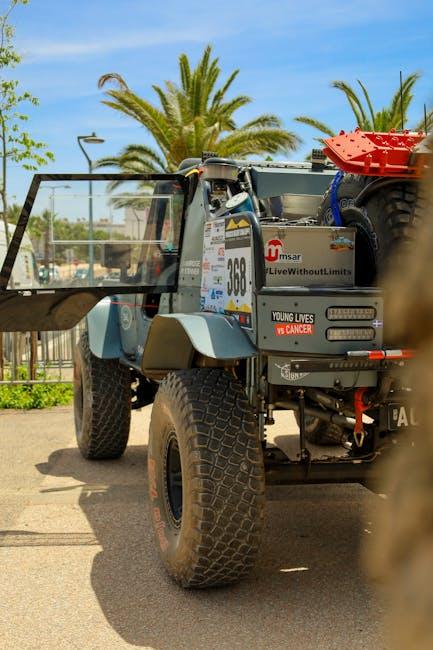Beneath the smooth hum of a car gliding down the road lies a complex dance between wheels and suspension—a relationship that quietly shapes the life of your tires. While most drivers focus on tread patterns or tire pressure, the subtle mechanics of suspension play an equally pivotal role in determining how evenly and quickly those tires wear. Understanding this intricate connection not only unravels the science behind tire longevity but also offers insights into enhancing vehicle performance and safety. This exploration sheds light on how suspension influences tire wear, revealing a hidden factor that tread carefully affects every journey.
Table of Contents
- Understanding the Role of Suspension in Tire Longevity
- How Suspension Geometry Influences Tire Wear Patterns
- The Impact of Shock Absorbers and Struts on Tire Health
- Common Suspension Issues That Accelerate Tire Deterioration
- Maintenance Tips to Optimize Suspension Performance for Even Tire Wear
- Choosing Suspension Upgrades to Enhance Tire Durability and Safety
- Q&A
- In Conclusion
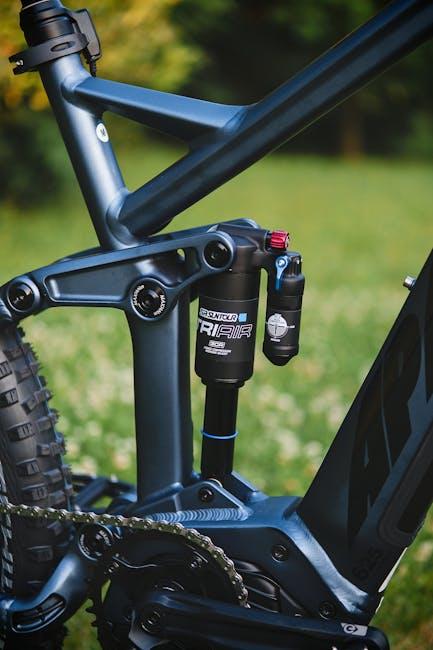
Understanding the Role of Suspension in Tire Longevity
Suspension systems play a crucial part in ensuring that tires wear evenly and last longer. By absorbing shocks from road imperfections and maintaining consistent tire contact with the surface, the suspension prevents unnecessary stress and uneven pressure on the tires. When the suspension is out of alignment or worn out, it can cause irregular tire wear patterns such as cupping, feathering, or excessive edge wear, dramatically reducing tire lifespan and compromising vehicle safety. Properly maintained suspension components distribute forces evenly, so the load on each tire remains balanced, extending the durability of your investment.
Several key factors in suspension directly influence tire longevity:
- Shock Absorbers: They dampen the impact of bumps, preventing tire bouncing that leads to excessive wear.
- Springs: Support vehicle weight and ensure tires stay grounded, minimizing uneven tread wear.
- Alignment: Correct wheel alignment promotes smooth, even contact of tires with the road surface.
| Suspension Component | Impact on Tire Wear | Maintenance Tip |
|---|---|---|
| Shock Absorbers | Prevents tire bouncing | Inspect every 12,000 miles |
| Springs | Maintains vehicle height | Check for sagging or damage |
| Alignment | Ensures even tire contact | Get alignment check annually |

How Suspension Geometry Influences Tire Wear Patterns
When the angles of your suspension components aren’t dialed in correctly, tire wear becomes inevitable and often uneven. Camber, toe, and caster angles play pivotal roles in how a tire’s contact patch meets the road. For example, excessive negative camber causes more wear on the inner edges of the tire, while positive camber does the opposite. Toe misalignment can lead to “scrubbing,” where tires drag slightly sideways against the road surface, creating feathered or scalloped wear patterns. The subtle interplay of these angles directly impacts how evenly your tires wear, making regular suspension checks crucial.
Consider this quick reference for common wear patterns linked to suspension issues:
| Wear Pattern | Likely Suspension Cause |
|---|---|
| Inner Edge Wear | Excess Negative Camber |
| Outer Edge Wear | Excess Positive Camber |
| Feathered Edges | Improper Toe Settings |
| Center Wear | Overinflation & Suspension Load |
By tuning your suspension geometry, you essentially control the tire’s footprint over the road surface, unlocking optimal grip and extending tire life. Ignoring these factors not only reduces performance but also inflates maintenance costs due to premature tire replacements.

The Impact of Shock Absorbers and Struts on Tire Health
Shock absorbers and struts play a pivotal role in maintaining the even distribution of tire pressure by controlling the vertical movement of your vehicle’s wheels. When these components wear out or fail, tires are subjected to constant bouncing and uneven contact with the road surface, resulting in irregular tire wear patterns. This uneven wear not only shortens the lifespan of your tires but can also compromise traction and vehicle stability, making your ride less safe and less comfortable. Investing in quality shocks and struts ensures that the tires maintain consistent road contact, promoting a smoother, safer ride and preserving tire tread integrity.
Understanding the connection between your suspension components and tire health can help prevent costly repairs down the line. Here’s what happens when shocks or struts degrade:
- Increased tire cupping: Tires develop high and low spots due to uncontrolled suspension movement.
- Accelerated tread wear: Uneven loading causes certain tire sections to wear much faster.
- Compromised alignment: Worn suspension parts lead to misalignment, contributing further to tire deterioration.
| Symptom | Effect on Tires | Benefit of New Shocks/Struts |
|---|---|---|
| Bouncing Ride | Tire tread wears unevenly with cupping | Smoother, even tire contact |
| Pulling to One Side | Unequal tire pressure and wear | Improved alignment and longevity |
| Noise on Rough Roads | Excess tire labor and damage | Reduced wear and tear |
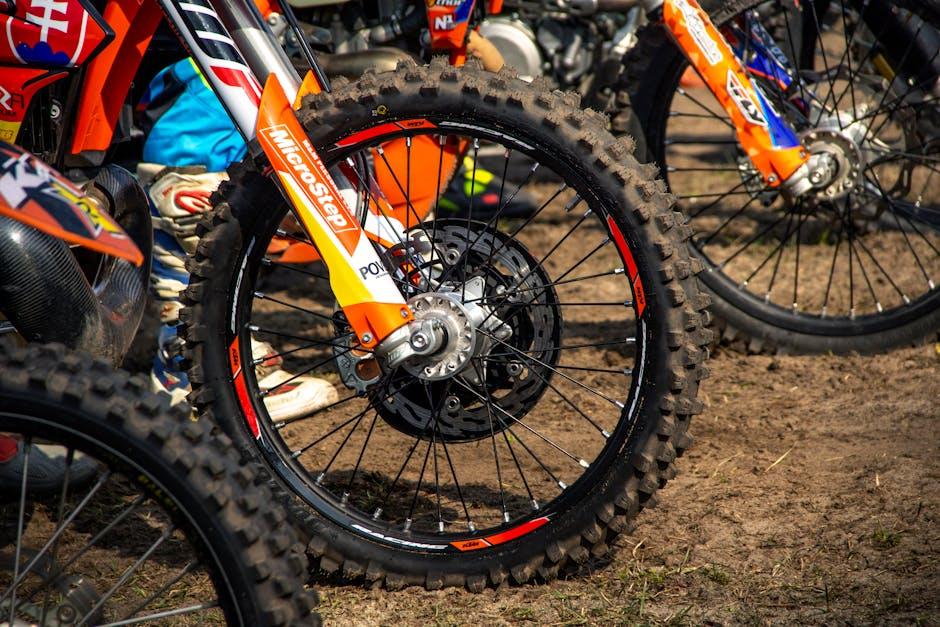
Common Suspension Issues That Accelerate Tire Deterioration
When your vehicle’s suspension components are compromised, tires bear the brunt of the damage. Misaligned suspension parts such as worn-out bushings, faulty shock absorbers, or broken springs cause uneven weight distribution across the tires. This imbalance leads to irregular tread wear patterns, drastically shortening tire lifespan. For instance, excessive camber angles caused by bad ball joints make tires wear faster on one edge, while weak shocks fail to absorb impacts properly, causing premature tread chunking and belt separation.
Common symptoms to watch for include:
- Uneven or scalloped tire wear
- Vibrations or shaking while driving
- Pulling to one side during braking or acceleration
- Increased road noise and rough handling
Below is a quick reference for suspension issues and their typical tire wear patterns:
| Suspension Problem | Tire Wear Pattern | Effect on Tire Longevity |
|---|---|---|
| Worn Ball Joints | Inner or outer edge feathering | Significantly reduces tread life |
| Damaged Shock Absorbers | Patchy or cupped wear | Causes erratic wear, shortens tire life |
| Broken Springs | Center or one-sided wear | Leads to rapid tire degradation |
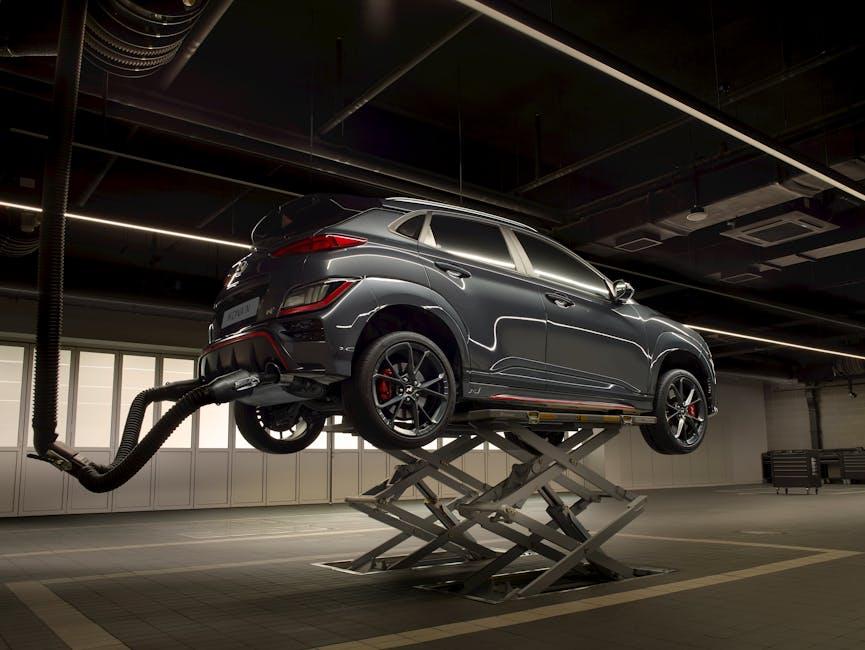
Maintenance Tips to Optimize Suspension Performance for Even Tire Wear
To keep your suspension system finely tuned and reduce uneven tire wear, regular inspections are essential. Start by checking for worn-out bushings, loose bolts, and damaged shocks or struts. These components play a vital role in maintaining proper alignment and absorbing road impacts, which directly affect how your tires contact the pavement. Additionally, ensure your vehicle’s wheel alignment is checked at least twice a year, or immediately after hitting a large pothole. Misalignment can cause excessive wear on the inner or outer edges of your tires, leading to premature replacement costs.
Consistent maintenance routines can dramatically extend the life of your tires and improve handling. Here are some practical tips to follow:
- Rotate your tires every 5,000 to 7,500 miles to promote even tread wear
- Monitor tire pressure monthly, as improper inflation affects suspension performance and wear patterns
- Inspect suspension components for leaks or damage and replace promptly
- Balance your wheels periodically to avoid unwanted vibrations that stress the suspension system
| Maintenance Task | Recommended Frequency |
|---|---|
| Wheel Alignment | Every 6 Months |
| Tire Rotation | Every 5,000 – 7,500 Miles |
| Suspension Inspection | Annually or After Impact |
| Tire Pressure Check | Monthly |
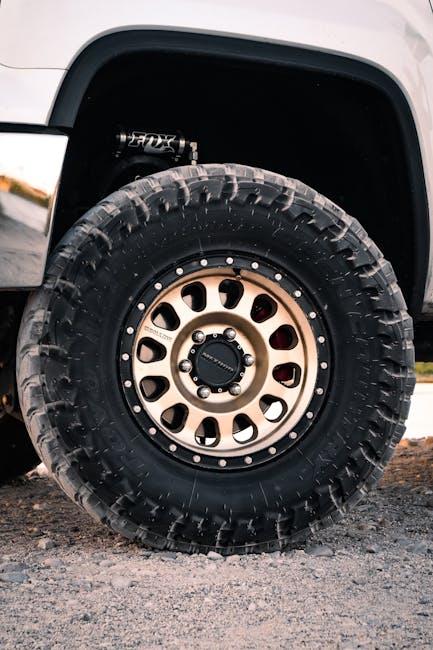
Choosing Suspension Upgrades to Enhance Tire Durability and Safety
Upgrading your suspension system is a strategic move to protect your tires from premature wear and maintain optimal road grip. A well-chosen suspension upgrade ensures that the tires maintain consistent contact with the road surface, preventing uneven stress distribution and enhancing overall stability. Components like high-quality shock absorbers and performance springs absorb road imperfections efficiently, reducing the harsh impacts that can cause tire cupping or sidewall damage. Additionally, upgraded suspension arms and bushings offer tighter control and precision handling, which helps in distributing forces evenly across the tire tread, prolonging its lifespan significantly.
- Improved shock absorbers: Minimize tire bouncing and vibration.
- Performance springs: Enhance vehicle stability and reduce aggressive tire wear.
- Upgraded control arms: Ensure precise alignment for uniform tire contact.
- Reinforced bushings: Absorb road shock and reduce tire stress points.
| Suspension Upgrade | Impact on Tire Durability | Safety Benefit |
|---|---|---|
| Adjustable coilovers | Customizable stiffness for even tire wear | Better handling at high speeds |
| Heavy-duty shocks | Reduces tire vibration and damage | Enhanced control on rough roads |
| Polyurethane bushings | Less tire misalignment | Increased steering precision |
Q&A
Q&A: How Suspension Affects Tire Wear
Q1: What role does the suspension system play in tire wear?
A1: The suspension system acts as the vehicle’s cushion, absorbing shocks and maintaining tire contact with the road. When functioning properly, it ensures even weight distribution and consistent tire grip, which helps tires wear evenly. If the suspension is worn or misaligned, it can cause uneven pressure on tires, leading to premature or irregular tire wear.
Q2: How does suspension alignment influence tire lifespan?
A2: Suspension alignment involves adjusting the angles of the wheels so they meet the road correctly. When alignment is off—think of wheels pointing slightly in or out—it creates uneven tire contact, often causing one edge of the tire to wear faster. Regular alignment checks help tires last longer by promoting balanced wear patterns.
Q3: Can suspension components like shocks or struts affect tire wear?
A3: Absolutely. Worn shocks and struts fail to absorb impacts effectively, causing tires to bounce more and lose steady contact with the road. This increased movement leads to patchy wear, where some parts of the tire wear faster than others. Replacing old suspension parts can smooth out the ride and protect your tires.
Q4: What are some signs that suspension issues are affecting my tires?
A4: Watch for uneven tire tread wear, unusual noises over bumps, a bouncing sensation while driving, or the vehicle pulling to one side. If you notice scalloping or cupping on your tires—patterns that resemble waves or dips—that often indicates faulty suspension components at work.
Q5: How can I prevent my suspension from causing tire problems?
A5: Regular maintenance is key. Schedule suspension inspections during routine services, ensure your wheels are properly aligned, and replace worn shocks or struts promptly. Keeping your suspension in balance not only extends tire life but also improves overall driving safety and comfort.
Q6: Does driving style impact how the suspension affects tire wear?
A6: Yes, aggressive driving—like hard cornering, rapid acceleration, and sudden braking—puts extra strain on the suspension system and tires. Over time, this can accelerate suspension wear, leading to irregular tire wear. A smooth driving approach helps preserve both suspension health and tire longevity.
Q7: Is there a difference in how suspension affects tire wear on different vehicle types?
A7: While the core principles are the same, vehicles with heavier loads, such as trucks and SUVs, often experience more suspension stress, making tire wear issues more pronounced if the suspension isn’t well-maintained. Sports cars with stiffer suspensions might show tire wear patterns more quickly due to performance-oriented setups.
In summary: Your suspension is the unsung hero that keeps tire wear in check by ensuring steady road contact and balanced load distribution. Listening to your car’s “suspension whispers” through tire wear patterns can save you money and enhance safety—so keep it tuned and aligned!
In Conclusion
In the intricate dance between your vehicle and the road, suspension plays a quiet yet crucial role—shaping not only the comfort of your ride but also the lifespan of your tires. Understanding how suspension impacts tire wear uncovers a deeper appreciation for the mechanics beneath you, reminding us that maintaining balance and alignment isn’t just about performance, but about preserving the very contact points that keep us moving safely forward. As you navigate your next journey, let this knowledge guide you to smarter upkeep, where every turn, bump, and mile contributes to a smoother, longer-lasting drive.

